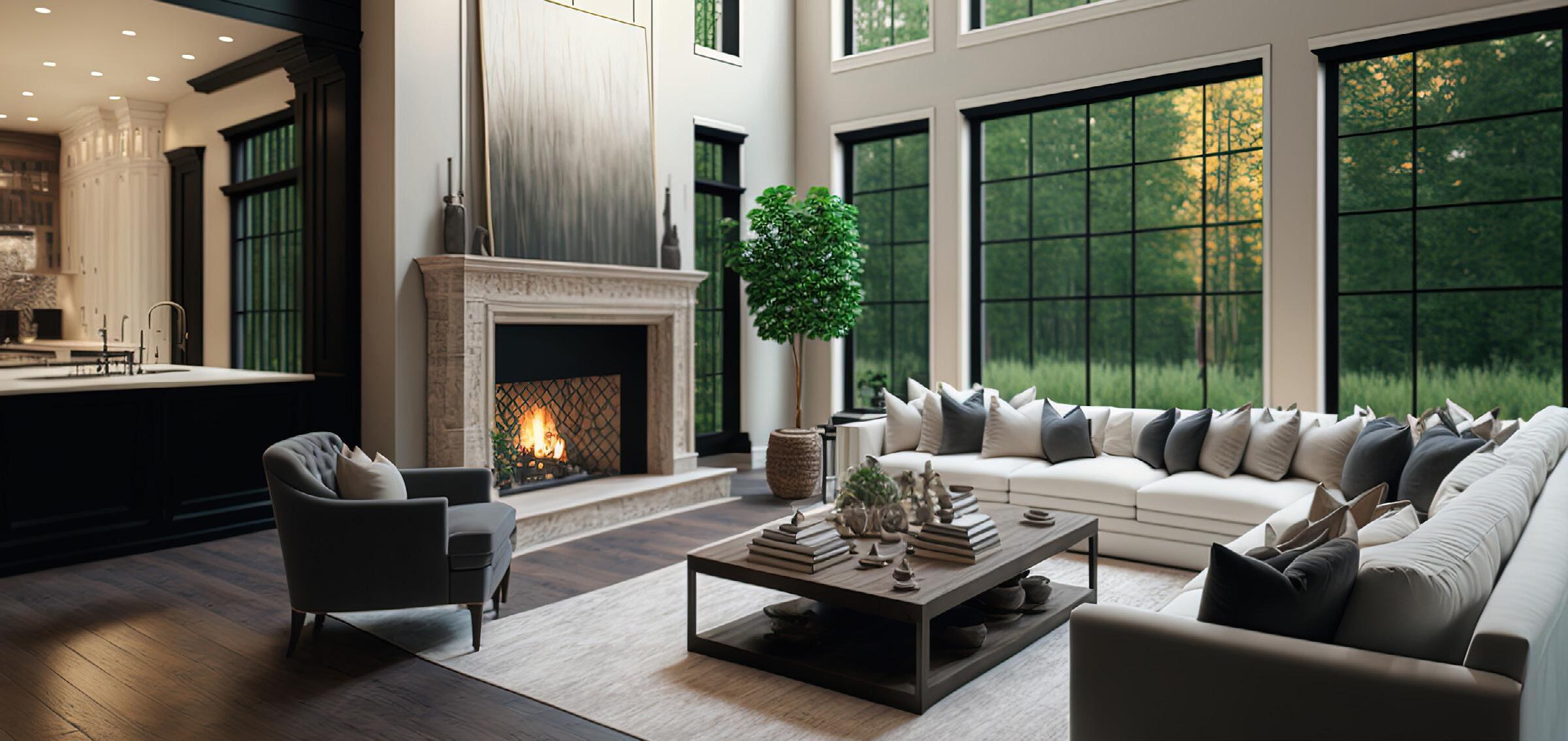
5 minute read
AMERICAN LUXURY REVIEW
Six M0nth Review of 2023
This month we take stock of the luxury real estate market at the six-month mark and end of the second quarter for 2023. The most significant trend, and one that seems contrary despite the continuous reports of lower sale volumes compared to 2022, is that, for the most part, the North American luxury real estate remains a seller’s market.
Advertisement
June’s statistics show that out of the 150 single-family home markets researched by The Institute, 110 are seller markets, 20 are balanced (neither favorable to sellers nor buyers), and only 20 are favorable to buyers. It is important to note that 13 of the buyer markets are either winter resorts or destinations, i.e., their real estate sales are typically not as strong during the summer months.
The attached market shows an even stronger bias towards sellers; out of the 103 reviewed, 84 are seller markets, 8 are balanced, and 11 are buyer markets.
While the number of sales in June 2023 compared to June 2022 fell approximately 11.5% for singlefamily homes and 14.0% for attached properties, sales have increased by 170% and 119% since January 2023 and by 8% and 1% compared to May 2023 respectively. Interestingly, in 2022 we saw the number of sales in June decline compared to May.
While we do not expect to see a continued increase in the volume of monthly sales during July and August – as these are typically slower months in the real estate calendar – these sales figures do show that the overall luxury market across North America is holding its own, especially when it comes to demand.
Inventory levels continued to climb, albeit slowly; single-family homes increased by 2.22% compared to June 2022, and attached properties rose by 8.56%, which has helped increase the opportunity for sales. However, the continued lack of new inventory each month, falling 19.18% compared to last June for single-family homes and 13.09% for attached properties, is probably the major contributor to luxury markets remaining favorable to sellers.
Until the volume of properties available for sale increases substantially, back to traditional norms recorded pre-Covid, it is unlikely that the luxury market will transition into a true buyer’s market anytime soon.
While some luxury properties may have felt some downward pressure on their price – and buyers are able to find more opportunities, especially when negotiating terms such as requesting repairs or closing costs – overall low inventory is the challenge for every luxury market, mainly because fewer sellers are willing to list their homes in this current climate.
Price consistency is also a strong indicator that the luxury market is still favorable to sellers; even though there is much talk about lack of sales, the sold price-to-list price ratio remains close to 100%. In June, single-family homes sold at an average of 99.67%, and attached properties sold at an average of 99.69%.

Looking at demand, sales, and prices during the first half of 2023, the North American market has continued to show a resilience that many would not have predicted at the start of the year. Looking to the immediate future, we can now say, with some confidence, that we are entering a period of more stability and sustainability.
A Global Perspective
A great deal of wealth was created globally over the last three years. Despite the downturn of the global equity markets in early 2022, according to Wealth-X, an Altrata Company, there has been a return to the steady increase of wealth creation since last June.
Although the cost of borrowing has increased globally, one long-term effect of the pandemic is that it has refocused the affluent’s desire to own property, the significant increase of cash sales by the affluent reaffirms their desire to buy luxury real estate.
The consistency of demand also shows a resilience that despite interest rate increases for the affluent who chose to borrow money, they recognize it is a temporary situation that can be actively managed.
A recent report from Mordor Intelligence predicts that the global luxury real estate market will register a CAGR (compound annual growth rate) of more than 2% each year over the next five years. Opportunities abound both in local markets and globally, and the affluent are bullish when deciding on their luxury choices in the long-term. There is a greater expectation for emerging markets to see the benefit as the global market returns.

In a recent report on the Global House Price Index from Knight Frank (tracking 56 countries), while there was a slowdown in the annual price growth during 2022, the first quarter of 2023 saw a 1.5% rise, compared to only a 0.6% increase in last quarter of 2022.
Liam Bailey, global head of research at Knight Frank, stated, “on its own, this reversal doesn’t confirm that global markets are set to improve – rather, it does highlight that tight supply, limited new housing constructions, and strong household formation are acting to underpin prices in many markets.”
The report also showed that 39 out of 56 markets had an annual gain in the first quarter, with eastern and southeastern Europe – Turkey, North Macedonia, and Croatia showing the top gains in their price indexes.
Not only are the wealthy diversifying their portfolio in the U.S. and Canada, as per Wealth-X, where 79% of those with a net wealth of over $5 million own at least two properties, but this trend is on the rise globally too.
A combination of the lockdown, a growing appetite to travel or relocate on a semi-permanent basis is seeing an uptick in the affluent obtaining a second passport or citizenship in 20231, a figure that rises to 16% amongst Asian ultra-high-net-worth individuals.
This is a complex landscape to navigate, as changes can be rapid and very dependent on whether a country has fulfilled its goals. For instance, while Canada has a large incentive to drive new immigrants to its shores, on the other hand, they have introduced a foreign buyer ban for two years (starting January 2023) in the major metropolitan areas. Golden Visa programs were highly attractive for potential buyers in Portugal and Ireland, but recently they were terminated.

However, against all the economic and stock market uncertainty, the affluent are often the first to recognize the opportunity this presents and look to diversify, whether to hedge against inflation or simply spread the risk, so expectations are that the affluent will expand their portfolios across multiple countries in the future.
The Long View
The affluent see real estate as a safe long-term asset, as the equity and crypto markets have become unsteady investments over the last year. Interestingly, the emphasis on purchases has changed in the North America considerably. Before the pandemic, one of the most significant reasons for purchasing was the return on investment; today, the emphasis has moved towards an improved lifestyle and security as being equally important.
Luxury may no longer solely be defined by size or price, but individuals are certainly looking to purchase a premium property that meets their current requirements and will pay the ticket price if it checks the boxes. Requirements of the wealthy are driven by exclusivity and a distinctive set of qualities in their new properties, not to mention a need to diversify their real estate portfolio.
For homeowners looking for their next home, it is still important to recognize that although costs to purchase will be much higher currently, over the long-term real estate offers one of the most consistent ways to see a good return. More importantly, ownership provides security and a haven for their family.
1. https://www.knightfrank.com/wealthreport
For The Luxury North American Market
Single-Family Homes Attached Homes Single-Family List Price Attached List Price
All data is based off median values. Median prices represent properties priced above respective city benchmark prices.



